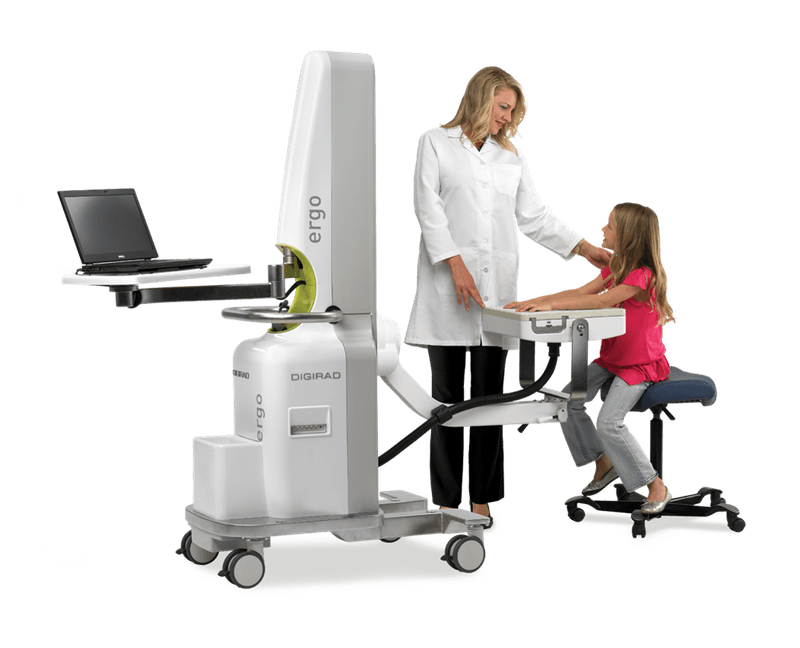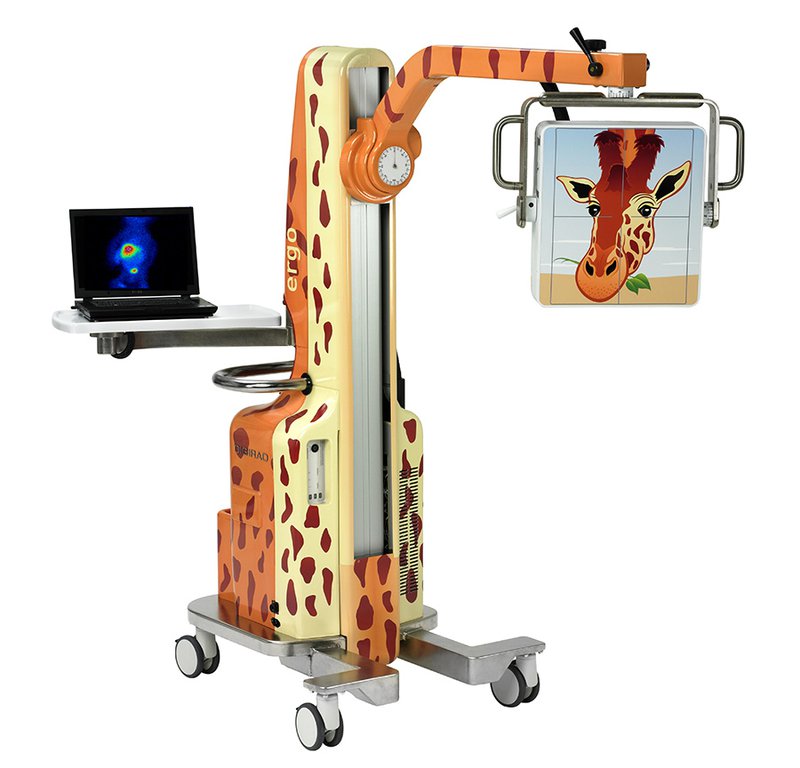If you work in children’s healthcare – especially within radiology and nuclear imaging department of the hospital – you know from personal experience that pediatric patients can be anxious around large machines, new people, and even the clinical environments of the radiology department itself.
You’ve tried your best to make both children and their parents feel at ease, but you know that even the most soothing bedside manner can only do so much when dealing with children who are scared and don’t fully understand what’s going on.
Point-of-care imaging is a proven way to make the imaging process easier for both pediatric patients and nuclear technologists. A portable camera allows you to perform many studies bedside and avoid having to bring the child to the radiology department.
In this post, we explore five critical ways that point of care imaging affects pediatric radiology.
1. Pediatric Patients Receive Care in a Familiar Environment
The nuclear medicine department can be an intimidating place for children. There are new care providers involved and the unfamiliar environment can create uncertainty.
When a portable camera is brought to a young patient’s room, you’re starting off on a much better foot. Even if they don’t fully understand the process, they stay in a familiar and safe environment.
In many cases, you’ll only need one nuclear tech to perform the study, which can help to alleviate a child’s anxiety.
2. Reduces the Need for Transport
Physical comfort is an essential part of any patient care in the hospital, but it’s especially key when you’re working with children. When providing nuclear imaging, it’s essential to keep the child’s movements to a minimum.
Depending on the severity of a child’s case, even a short trip to the radiology department could require careful planning and multiple team members. Portable cameras, like the Digirad Ergo, can come directly into a child’s room in the hospital so they don’t need to travel for imaging.
Because the Ergo has an open gantry, working around the patient is flexible. You can position the camera in many different ways so that you can move the Ergo instead of the patient. This way, you have much more flexibility when it comes to capturing the images you need.
In some cases, parents and loved ones may even be able to hold their child while the imaging happens.

3. The Ergo Camera Minimizes Time Spent Under Anesthesia
Perhaps one of the most valuable things about point-of-care pediatric imaging is that it helps children spend less time under anesthesia.
The Ergo can be used in the operating room and allows for visual confirmation of results in real time so that you can ensure the surgery was a success the first time.
The ability to image in the operating room removes the need to transport the patient, while under anesthesia, to the radiology department.
4. Custom Graphics Make Imaging Fun
Digirad created a pediatric version of the Ergo camera with wrapped graphics that feature our favorite character, Gina the Giraffe. The truth is that fun graphics featuring characters and animals can help children to stay calm and even distract them during the imaging process.
Children can ask Gina questions and look to her to help them to stay still and relaxed. It’s one little way to make an intimidating experience fun for children!

5. Children Can Stay With Family Members
Many children experience separation anxiety from their parents and other family members over the course of a normal day. When they think they’re going to be left at a hospital and have to undergo procedures on their own they may feel upset or even scared.
Because the Ergo nuclear medicine camera is portable and can be brought directly to the child’s room, parents can stay with the child throughout the process (depending on the specific scan).
Anything that you can do to keep the child feeling safe and secure will make the scan much easier on everyone.
Making the Move to Point-of-Care
As a medical professional, you’re committed to making all of your patients feel safe and well cared for, but it’s especially important when working with pediatric patients.
We hope this post has helped you to understand how point-of-care imaging can improve the patient experience for both children and adults (after all, everyone can benefit from its portability.)
For patients that need nuclear imaging, Digirad’s Ergo camera can give you the best possible outcomes while also keeping your patients comfortable and relaxed.




